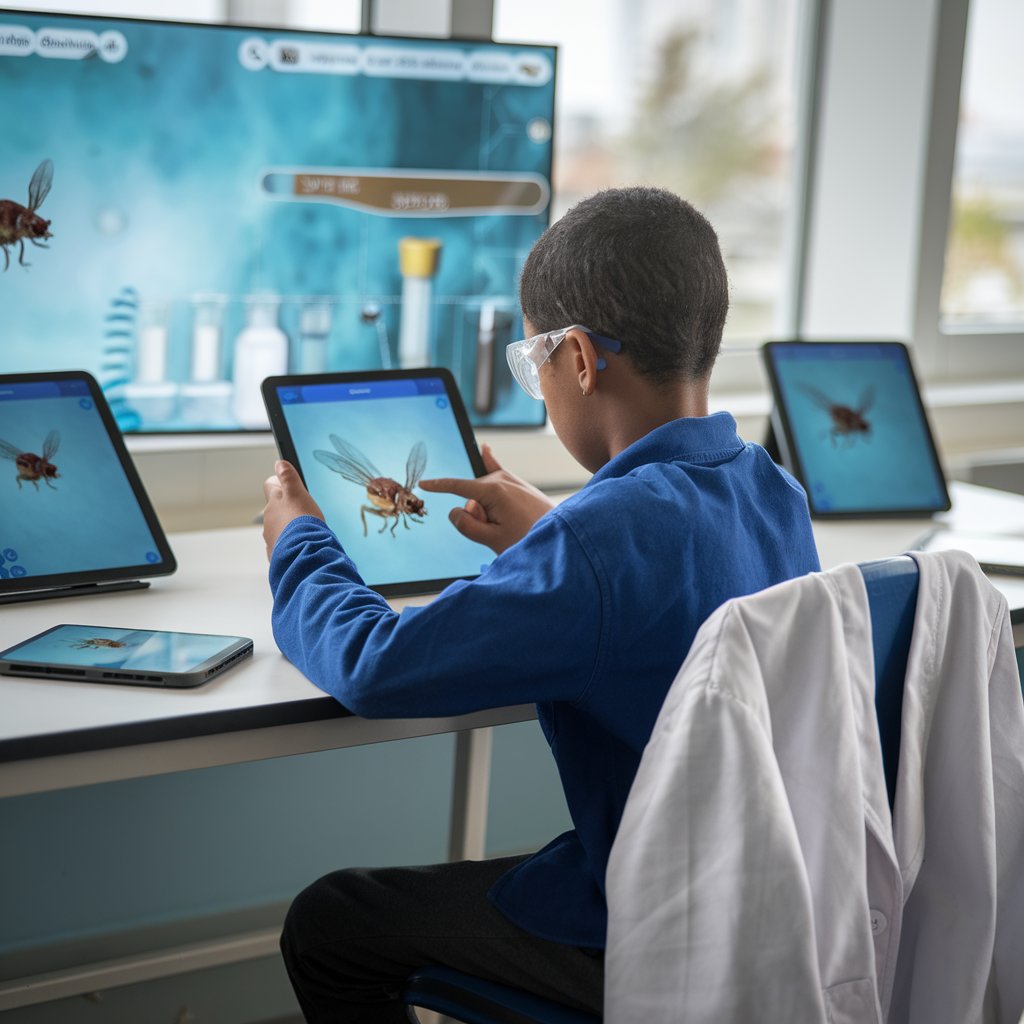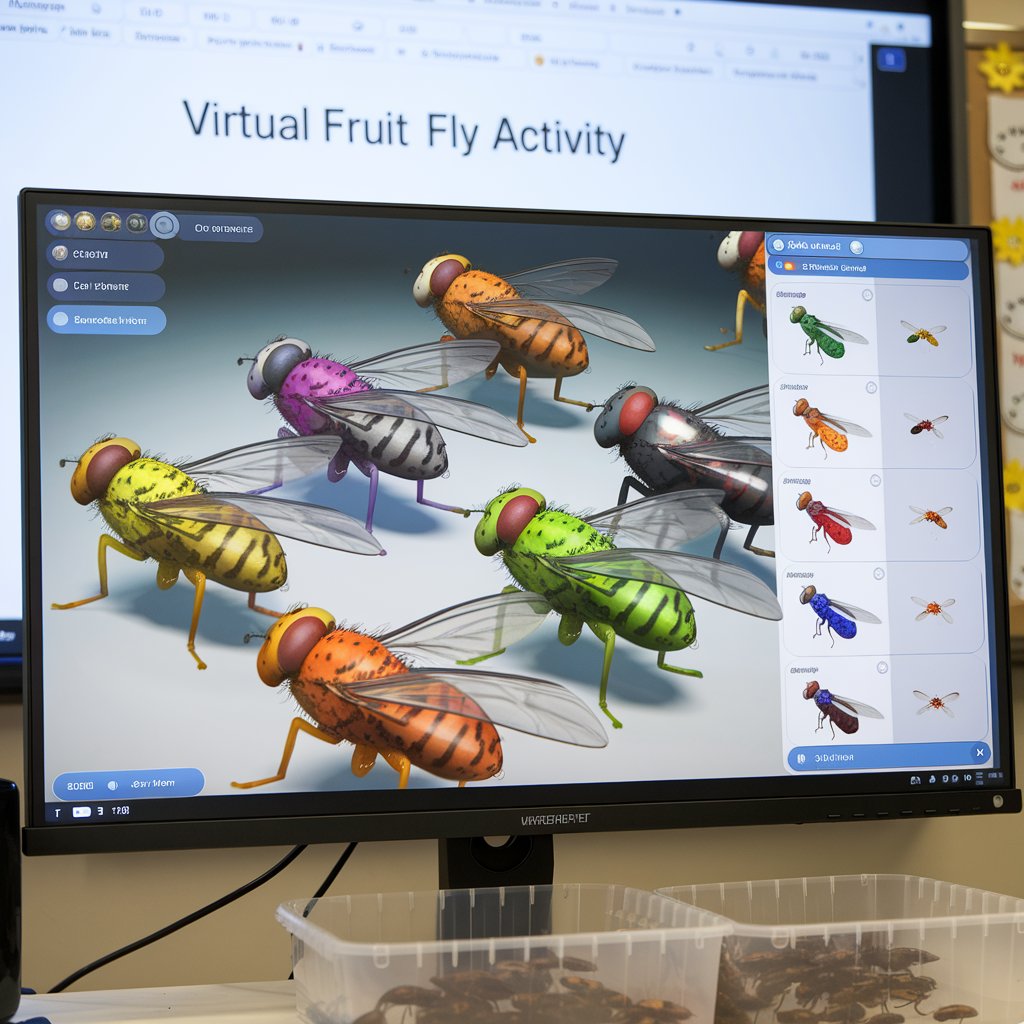Table of Contents
Virtual fruit fly activity is an exciting way to explore genetics and biology from the comfort of your own home or classroom. This activity introduces students to Drosophila melanogaster, better known as fruit flies, and helps them learn how scientists use these tiny creatures to study inheritance and mutations. Through virtual experiments, students can perform simple genetic crosses, observe different traits, and understand how these traits are passed from one generation to the next.
With the virtual fruit fly activity, students not only engage in learning about genetic science, but they also have fun while doing so! The activity is designed to be interactive and easy to follow, making it perfect for students of all ages. Whether you’re a teacher looking for a creative way to teach genetics or a student curious about the fascinating world of fruit flies, this virtual experience will provide you with valuable insights and hands-on learning without the need for a real lab.
Why Use Virtual Fruit Fly Activity for Learning Genetics? Exploring the Benefits
There are many reasons why the virtual fruit fly activity is a great tool for learning about genetics. First, it makes complex scientific concepts easier to understand. Instead of reading about genetics from a textbook, students get to actively participate in experiments and observe real-time results. This hands-on approach helps students grasp the concepts better and stay engaged.
Secondly, it’s a cost-effective alternative to traditional lab experiments. Setting up a real lab with live fruit flies can be expensive and time-consuming. The virtual activity allows students to simulate genetic experiments without the need for any special equipment or resources. This way, teachers can provide valuable educational experiences without the extra cost.
Lastly, the virtual fruit fly activity helps students build problem-solving skills. As they work through different scenarios and investigate genetic outcomes, they learn how to analyze data and make predictions based on scientific principles.
How to Get Started with Virtual Fruit Fly Activity: A Step-by-Step Guide
Getting started with the virtual fruit fly activity is easy! Here’s how you can begin:
- Access the Activity: First, you’ll need to open the virtual lab. Most platforms offer it as a web-based program, which means you can access it from any computer with an internet connection. Simply find the activity link provided by your teacher or the website hosting the experiment.
- Understand the Basics: Before diving into the experiments, take some time to read about the different traits of fruit flies, such as wing shape and eye color. Learn how to identify male and female flies so you can set up accurate crosses.
- Start Experimenting: Once you understand the basics, begin crossing different flies to see how their traits are passed down. Watch how offspring inherit the traits from their parents, and take notes on what you observe.
- Analyze Results: After completing the experiments, analyze your results to see which traits were dominant or recessive. This will help you understand the genetic principles behind inheritance.
By following these steps, you can easily complete the virtual fruit fly activity and gain valuable insights into genetics.
Exploring Different Genetic Crosses in Virtual Fruit Fly Activity: Wild Type, Curly Wings, and More

In the virtual fruit fly activity, students can explore a variety of genetic crosses. One of the most common crosses involves wild-type flies, which have normal traits like red eyes and straight wings, and stubble flies, which have a unique stubble-like feature on their bodies.
- Wild-Type x Stubble Cross: This cross helps students understand how different alleles can produce visible traits in offspring. By tracking the outcomes, students learn about dominant and recessive genes.
- Curly Wing x Wild-Type Cross: Another exciting cross involves curly-winged flies. When these are crossed with wild-type flies, students observe how the curly-winged trait is inherited and passed down.
- White Eye x Wild-Type Cross: A classic experiment involves crossing wild-type red-eyed flies with white-eyed flies. This helps students see how mutations in the gene for eye color are inherited.
These different crosses teach students about various inheritance patterns, such as Mendelian inheritance, making the virtual fruit fly activity an excellent resource for understanding genetics.
What Students Can Learn from Virtual Fruit Fly Activity: A Deep Dive into Inheritance Patterns
The virtual fruit fly activity is a great way for students to learn about inheritance patterns in a fun and engaging way. By experimenting with different crosses, they can observe how traits like eye color, wing shape, and body size are inherited from one generation to the next. This hands-on approach helps them better understand key genetic principles.
- Mendelian Inheritance: Students will explore how dominant and recessive alleles affect the traits of offspring. For example, red eyes may be a dominant trait, while white eyes are recessive.
- X-Linked Traits: Some traits are carried on the X chromosome. By studying how these traits are inherited, students learn about sex-linked inheritance, which is crucial for understanding many genetic disorders.
- Mutation and Variation: The activity also shows how mutations can lead to new traits, like curly wings or stubble bodies. This helps students understand how genetic variation occurs naturally in populations.
Through the virtual fruit fly activity, students will gain a deeper understanding of how traits are passed down and how genetics shape the diversity of life.
Top Tips for Teachers: How to Make Virtual Fruit Fly Activity More Engaging

To make the virtual fruit fly activity even more exciting and effective for your students, here are some helpful tips:
- Encourage Group Work: Let students work in small groups to complete the virtual activity. This encourages collaboration and helps them learn from each other.
- Use Discussion Prompts: After completing experiments, ask students to discuss their results. For example, ask questions like, “Why do you think some flies had curly wings and others had straight wings?” This stimulates critical thinking.
- Relate to Real-World Examples: Help students connect the activity to real-life examples of genetics. For instance, discuss how genetic traits are passed down in humans and animals.
- Provide Hands-On Follow-up: If possible, follow the virtual activity with a hands-on activity, like a simple genetic puzzle or model, to reinforce the concepts they’ve learned.
Conclusion
The virtual fruit fly activity is a fun and exciting way for students to learn about genetics. By using fruit flies in experiments, students can explore how traits are passed down from one generation to the next. This online activity makes science easy to understand and helps students see how real scientists study genetics in a fun, interactive way. It’s a great tool for teachers to bring genetics to life without needing a real lab.
Overall, the virtual fruit fly activity is not only educational but also enjoyable. Students can explore different traits like eye color and wing shape, learning important scientific concepts as they go. It’s a perfect activity for anyone interested in genetics, helping kids understand how the world of science works, all while having fun!
FAQs
Q: What is a virtual fruit fly activity?
A: A virtual fruit fly activity is an online experiment where students learn about genetics by studying how traits are passed down in fruit flies.
Q: How does the virtual fruit fly activity help students learn?
A: It helps students understand genetic concepts by allowing them to conduct experiments, observe traits in fruit flies, and analyze how traits are inherited.
Q: Do students need a real lab to participate in the activity?
A: No, the activity is virtual, so students can complete it on a computer without needing a real lab or live fruit flies.
Q: What traits can students study in the virtual fruit fly activity?
A: Students can study traits like eye color, wing shape, and body size by crossing different types of fruit flies.
Q: Is the virtual fruit fly activity suitable for all ages?
A: Yes, it’s designed to be easy for students of all ages, especially for young learners in elementary or middle school.
Q: How can teachers use the virtual fruit fly activity in their classroom?
A: Teachers can use it as a hands-on lesson for genetics, assign it as a group activity, or even use it as a fun homework project to reinforce genetic concepts.


